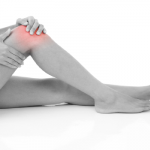Knee pain is a common affliction for adults, in part because it can be attributed to so many causes, from dislocation of the joint to ligament injuries to arthritis. These conditions are typically treated without surgery using a multi-step approach to relieve pain and rebuild strength in the knee. 
Injection therapies are an excellent treatment for temporary relief of knee pain that will allow patients to enter rehabilitation therapy for further recovery. Here is a look at the injection therapies that might be included in your treatment plan for knee pain.
Prolotherapy
When ligaments and tendons are torn or significantly weakened, they often do not heal on their own because these connective tissues do not receive many nutrients from the bloodstream. Prolotherapy supplements the nutrients these tissues are lacking with direct injection of a dextrose solution that stimulates the body’s natural healing mechanisms. With repeated injections, prolotherapy can relieve pain and allow the injury to heal gradually.
PRP
PRP or platelet rich plasma therapy works similarly to prolotherapy, but it uses the patient’s own blood to accelerate the healing process. A small blood sample is taken and filtered through equipment that increases the platelet concentration of the sample so it can be injected at the injury site.
Euflexxa
This hyaluronic acid (HA) based solution is used exclusively for the treatment of osteoarthritis in the knee. In healthy knees, HA is naturally present, and it works to lubricate the joints. HA can deplete over time, leading to inflammation of the knee. Euflexxa injections revitalize HA in the knees so patients can regain mobility and comfort in regular activities.
You can find out more about these and other minimally invasive pain management techniques by scheduling an appointment at Non-Surgical Orthopaedics at 770-421-1420. We have two locations in the Atlanta area to help you bounce back from pain caused by sports injuries, arthritis, and other common orthopedic conditions.
